The Evolution HBS-1031 blender is a reliable kitchen assistant with three main functions: an immersion blender, a whisk and a chopper. Its simplicity and clarity are undeniable advantages. No frills, no complications — simple and effective. This versatile device easily copes with the tasks of finely chopping onions, preparing mashed potatoes, blending smoothies, and also delights the family with delicious meringues or whipped cream.
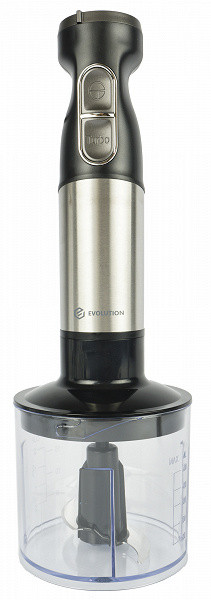
We didn’t start cooking all the dishes listed above, but we checked how the Evolution HBS-1031 works.
Characteristics
| Manufacturer | Evolution |
|---|---|
| Model | HBS-1031 |
| Type | blender |
| Country of Origin | China |
| Guarantee | 12 months |
| Life time * | 3 years |
| Declared power | rated power — 800 W, maximum — 1000 W |
| Housing material | plastic |
| Case color | black |
| Control type | mechanical |
| Number of speeds | 1 + turbo mode |
| Speed in main mode | 9900—14000 rpm |
| Speed in turbo mode | 15000 rpm |
| Engine overheat protection | There is |
| Lockout due to incorrect assembly | No |
| Equipment | mixing glass, chopper bowl with S-shaped blade made of stainless steel, blender attachment made of stainless steel, whisk for whipping |
| Knife shape | 2-petal |
| Jug material | plastic |
| Jug volume | 700 ml |
| Chopper bowl volume with lid | 500 ml |
| Cord length | 1.1 m |
| Dimensions (W×H×D) | 66×400×66 mm |
| Net weight | 1.2 kg |
* Contrary to popular belief, this is not the time limit after which the device will necessarily break down. However, after this period, the manufacturer ceases to bear any responsibility for its performance and has the right to refuse to repair it, even for a fee.
Equipment
The blender comes in a durable white cardboard box. The box contains an image of the device itself and its accessories, a brief description of the main functions, technical characteristics and information about the configuration.
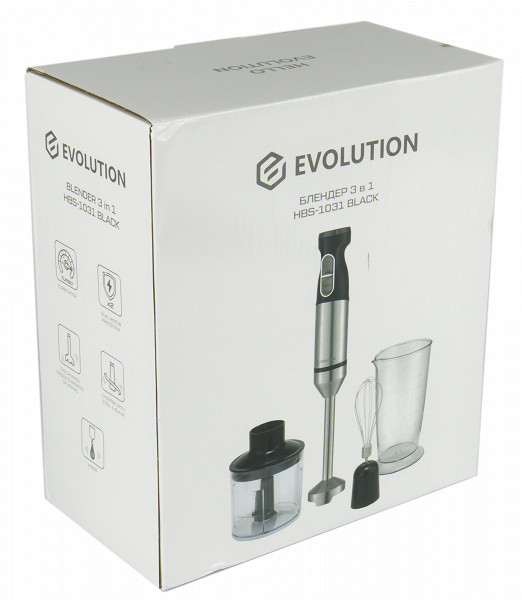
Inside the package, the blender and its components are carefully wrapped in polyethylene and separated by cardboard inserts.

The following components were removed from the packaging:
— Main unit.
— 700 ml mixing glass with a convenient spout.
— 500 ml chopper bowl with S-shaped blade made of stainless steel.
— Stainless steel blender attachment.
— Whisk for whipping.
— Manual.
At first sight
The blender is a device of a standard design, consisting of a main unit and a set of accessories.
The motor block is made of plastic and stainless steel, with a convenient recess for your hand. The coating is pleasant to the touch and resistant to marks. The design of the device follows the traditions of this type of device.
There are two large mechanical buttons on the front panel. At the top there is a place for connecting the power supply, and at the bottom there is a connector for attaching attachments.

On the top of the motor block there is a switch for the speed of rotation of the nozzles, indicated by two modes: “low” (low speed) and “high” (high). By rotating the knob you can easily control the speed of the device.
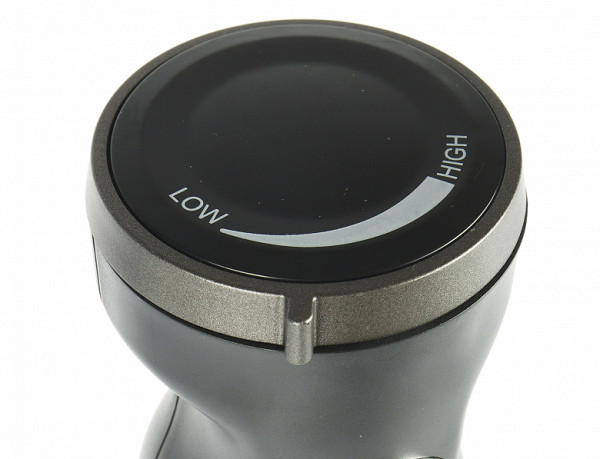
In the photo below we see a whisk inserted into the adapter. The adapter, in turn, is attached to the motor block. The whisk is made of stainless steel.


The blender attachment is also attached directly to the motor unit.

The blender attachment itself is made of stainless steel:
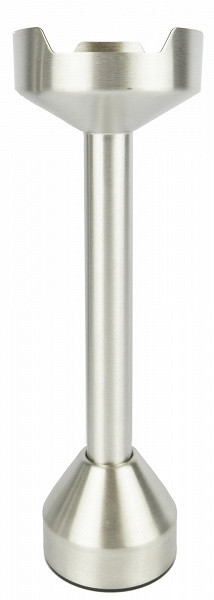
There is a slight concave bottom inside the nozzle, and the outer edge is equipped with cutouts. The depth of the concave area is approximately 3 cm, and the diameter reaches 6.5 cm. The S-shaped knife has two sharp blades on one side.
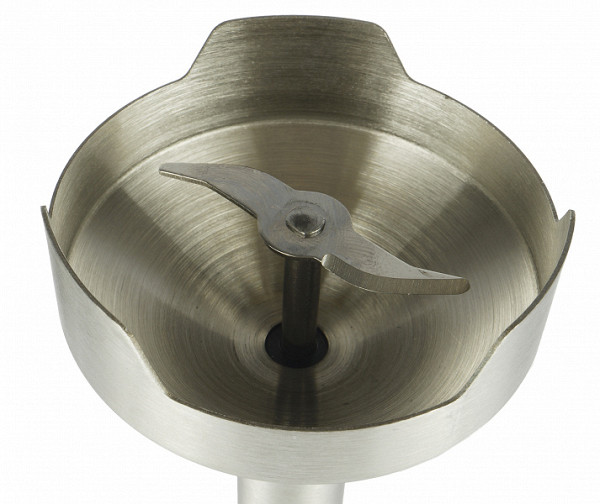
The 500 ml capacity of the chopper is made of transparent plastic. On opposite sides of the container there are two scales: one is represented by marks in milliliters, and the other in cups and ounces. The black plastic cover serves to tightly close the chopper container into which the motor unit is installed. The part is installed and fixed by matching the edges of the top of the container with the edges of the inside of the lid.

An S-shaped blade made of stainless steel is attached to the chopper bowl.

Made from clear plastic, the mixing glass provides a convenient means of preparing drinks. According to the description on the website, it has a capacity of 700 ml, and the inclusion of a convenient spout makes it even more convenient to use.

Instructions
The instruction manual for the Evolution HBS-1031 blender is a brochure on 18 pages in A5 format. The information is presented exclusively in Russian.
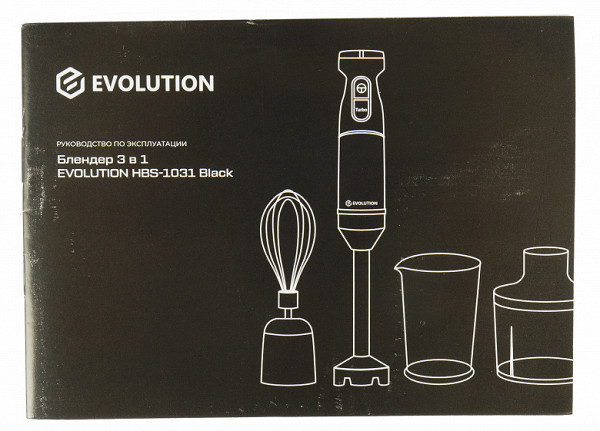
The manual includes a detailed description of the structure of the device, accompanied by schematic illustrations. Instructions for using the attachments, recommendations for their care, and technical specifications of the device are also provided.
Control
The blender has only two modes: normal and turbo. The top button is for normal mode, the bottom (as it says on it) is for turbo mode.
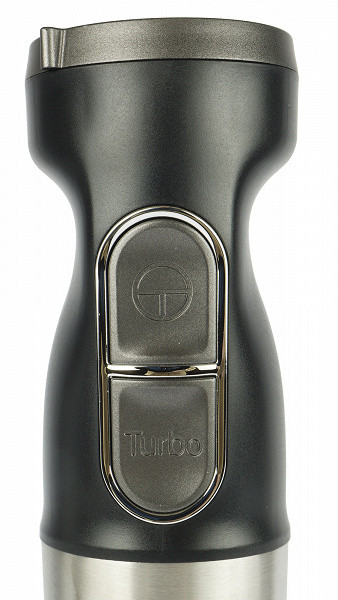
At the top of the engine compartment, as we already mentioned, is the speed controller.
Operating the device is extremely simple and did not cause us any difficulties.
Exploitation
Before using the blender, we thoroughly cleaned all accessories and wiped down the motor unit.
The process of attaching the motor unit to the chopper bowl or blender attachment is intuitive. All elements are easily connected and fixed; simply turn the motor unit clockwise until it clicks. The fixation is strong and does not require significant effort.
With a power of 1000 W, the device demonstrates good performance, providing fast and high-quality chopping, mixing and whipping.
The instructions indicate the recommended time for continuous operation of the attachments (1-2 minutes) and the whisk (30 seconds), as well as a break between uses of 10 minutes. Even though we exceeded the recommended time range, the device showed good stability. The engine block warmed up, but not to a critical degree, and overheating did not occur.
In general, the operation of the device did not cause us any problems and left a positive impression.
Care
Caring for the device is standard for devices of this type: it is recommended to wipe the motor block, chopper cover and adapter with a damp soft cloth. All other parts can be washed in the dishwasher, with the exception of the blender attachment, which can simply be rinsed under running water. It is important to avoid the use of chemically aggressive and abrasive products. Be careful when handling knives as they are sharp.
Our measurements
During testing, we measured energy consumption using a wattmeter. The maximum recorded power was:
- smoothie (blender) — 84 W
- preparing pate (chopper) – 84 W
- whipped cream (whisk) — 40 W
Practice tests
Tomato test (chopper)
Classic tomato test. We took a couple of tomatoes, cut them quite large and put them in the chopper.
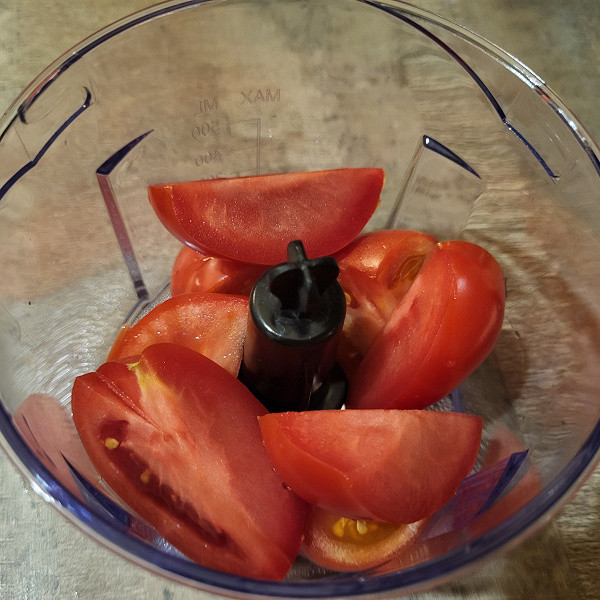
After two minutes of work, the tomatoes were ground into a fairly homogeneous mass.
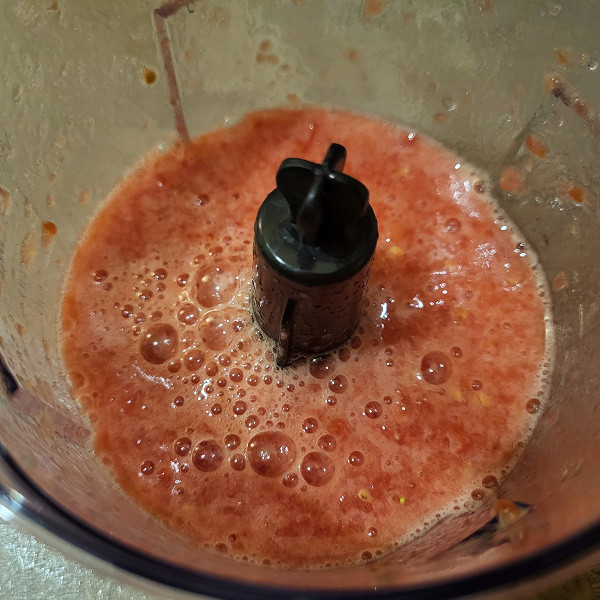
However, bits of skin and seeds are still visible.
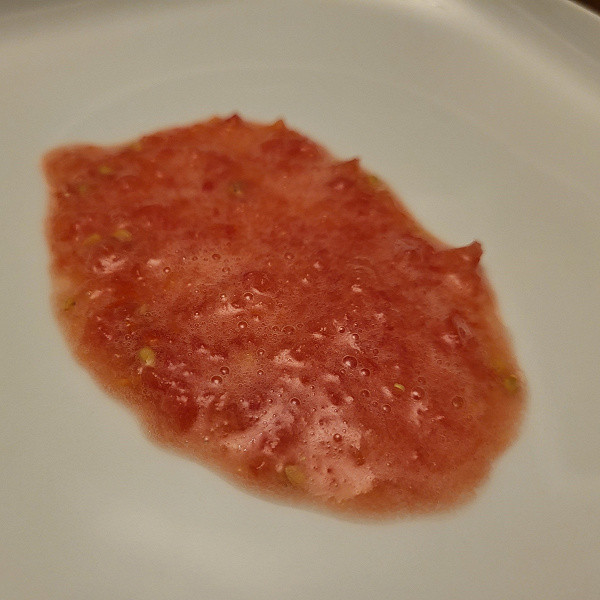
And then we took the onions and bacon and added them to the frying pan:
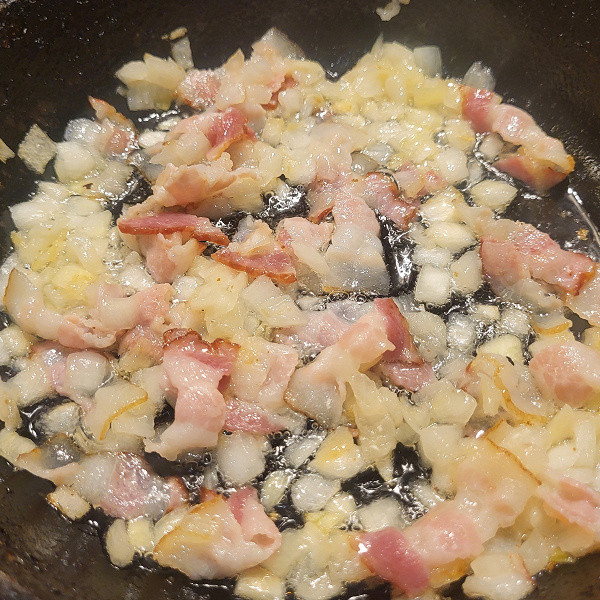
Added crushed tomatoes to them.
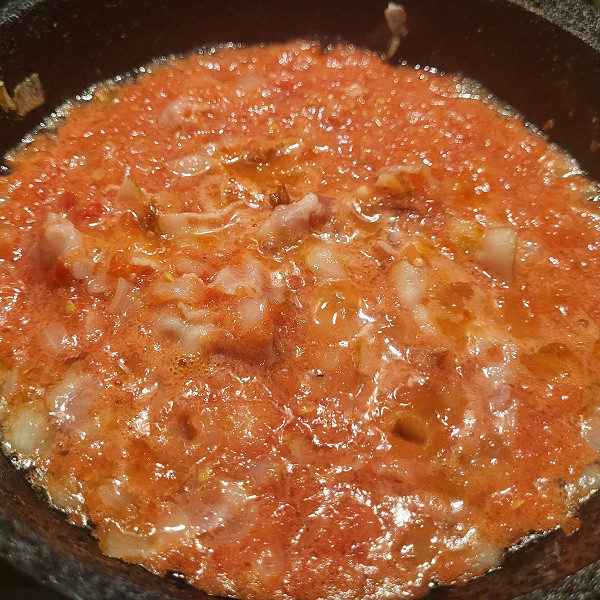
While we were doing all this, we cooked pasta, which we added to the ready-made sauce.

They mixed everything, put it on plates and ate it with gusto.
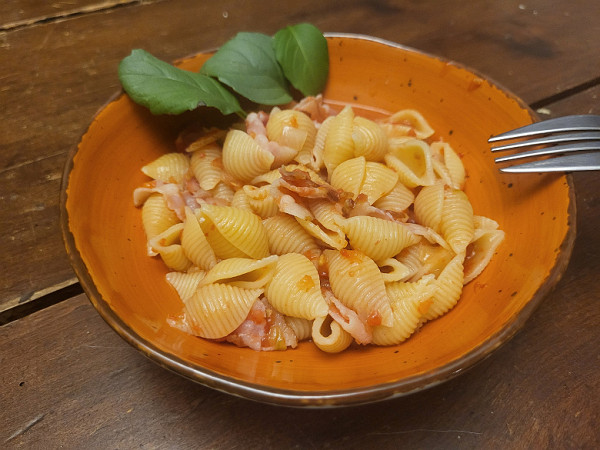
Result: good
Smoked fish mousse (blender)
To prepare smoked fish mousse we used the following ingredients:
- Cold smoked trout – 100 g
- Cream 10% – 300 g
- Gelatin – 5 g
- Rice vinegar — 1 teaspoon
- White pepper — 1 pinch
- Water — 40 g
- Salt — to taste
Cut the fish into large pieces and pour in 10% cream (100 g). Then we placed the fish and cream in a saucepan and heated it up. Considering that 35% cream has a denser texture, 10% was chosen to achieve the desired consistency.
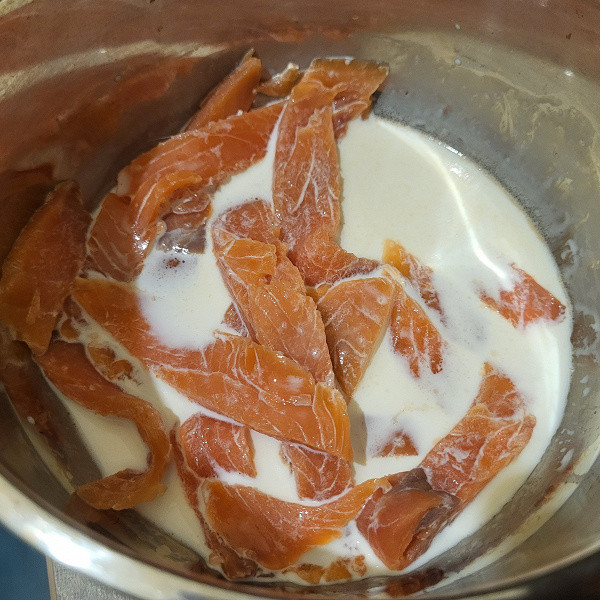
Mixed with gelatin pre-dissolved in water and sent to a blender. The creamed fish turned into a homogeneous mass.
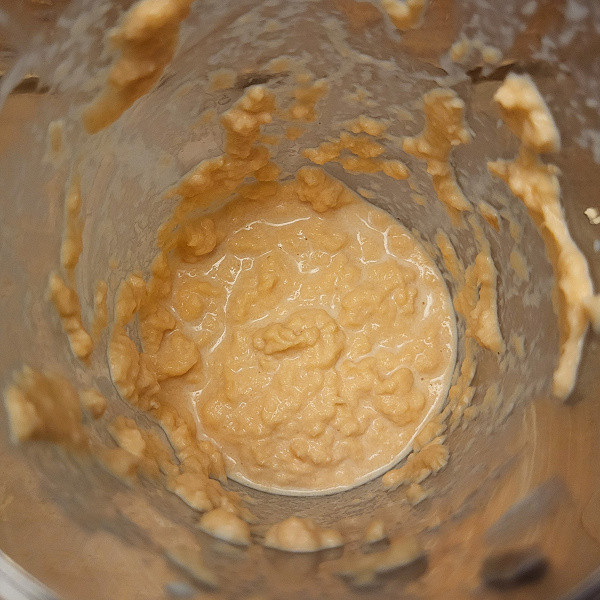
Then it was necessary to whip the remaining cream and carefully fold it into the fish. However, our cream did not whip, probably because it was warm. In any case, the failure to whip the cream did not become an obstacle, and we, following the recipe, carefully stirred it into the fish mass, adding vinegar, white pepper and salt.
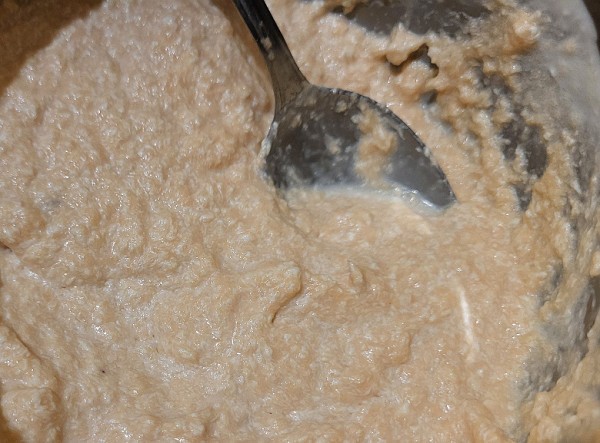
Then we poured everything into a mold (the author of the recipe advises using baking paper to make the frozen mousse easier to separate from the mold) and put it in the refrigerator.

The next day we took the mousse out of the mold, cut it and enjoyed it with pleasure. This dish is perfect as an appetizer for a holiday table, and can also become a tasty treat on weekdays if you put it on a piece of baguette and enjoy the taste.
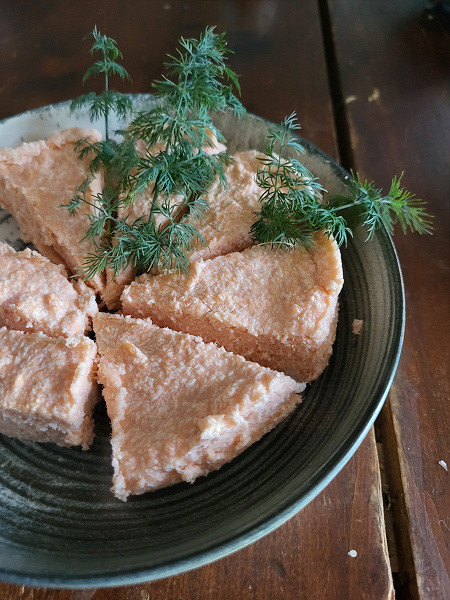
Result: excellent
Banana and blackcurrant smoothie (blender)
Since we started testing blenders, we've fallen in love with making smoothies. This is an excellent solution when there is no desire, but there is a need. Or, for example, when it’s already midnight and you don’t want to have dinner after six.
Our favorite and simple ingredients for smoothies are frozen berries (although, of course, fresh is preferable, but where to get them in winter), banana and plain yogurt. This time we used frozen blackcurrants. Just put all the ingredients in a blender.
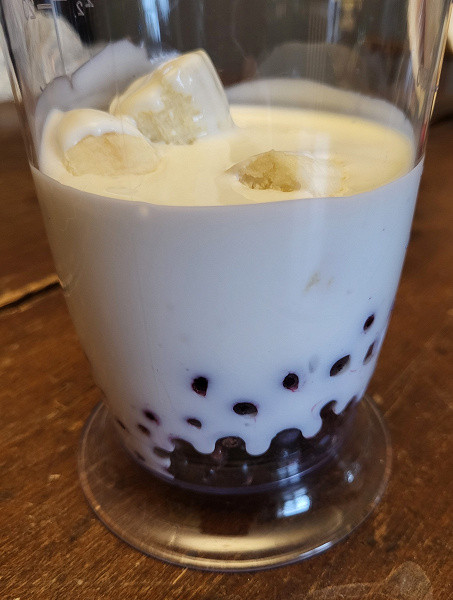
And they purified the contents, adding, however, a spoonful of sugar: currants are not the sweetest berry in the world.
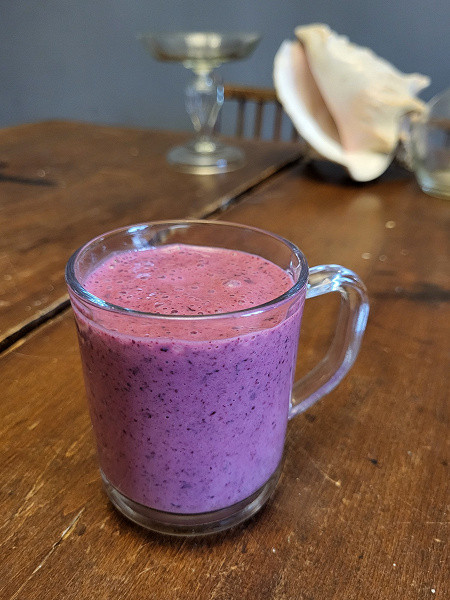
It turned out to be a wonderful smoothie, we didn’t come across any large skins from the berries, we did come across some seeds — but it seems that not a single immersion blender can cope with them. Bones are a necessary evil.
Result: excellent
Meringue (whisk)
Finally, we decided to try making meringue, and this is what we came up with.
We took two eggs and carefully separated the whites from the yolks. The whites were transferred to a separate bowl and beaten with a whisk.
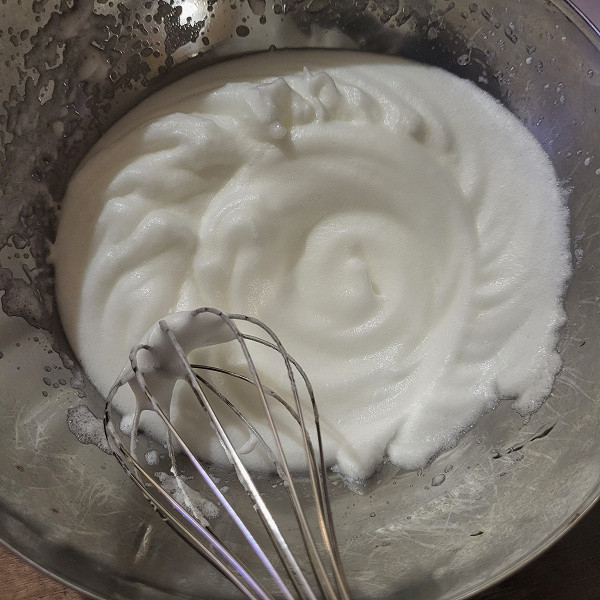
The whites were whipped perfectly, to “hard peaks”. But we couldn’t get the meringue the way it should be. And it’s not about the blender; there are no complaints about it.
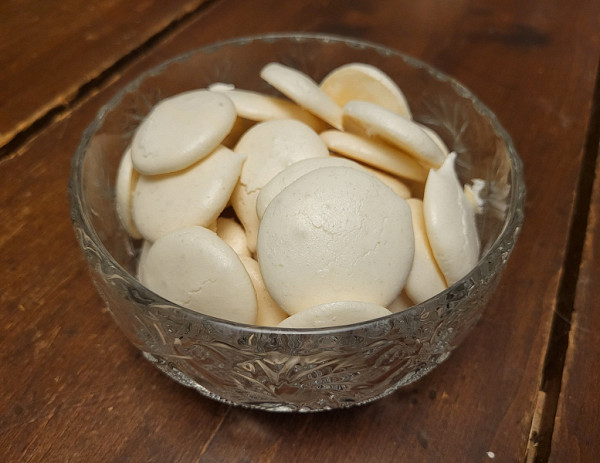
However, in any case, the meringue was prepared — even if the shape was not as perfect as we would like.
Result: excellent
Turkey Liver Pate (Chopper)
In the end, we decided to use the chopper again and make pate. For some reason, the store didn't have chicken livers, so we got turkey livers (and honestly didn't see any difference between the two — except for the size).
The liver was soaked in milk for 30 minutes.

During this time, the onions and carrots were fried.
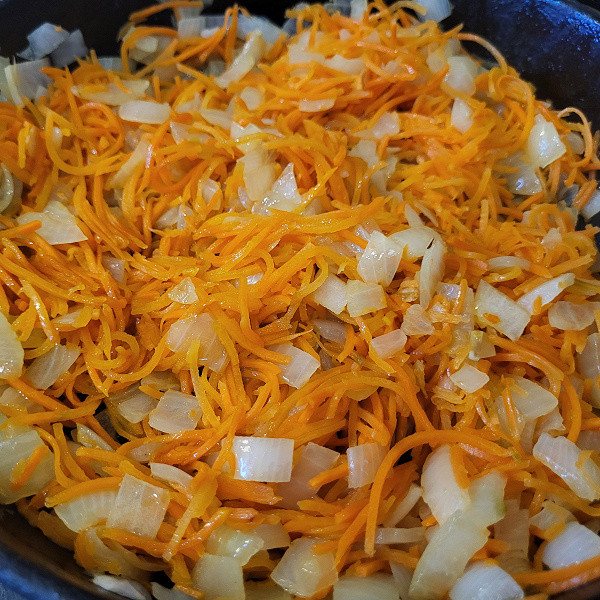
And then they threw the liver into the same frying pan and simmered it a little.
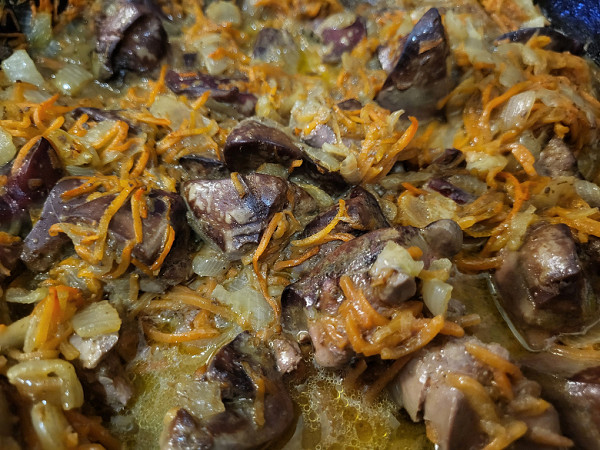
After letting the liver cool, we transferred the mixture to the grinder. Here we noticed what seems to be the only drawback of the blender — the not very large volume of the chopper bowl. Our home blender, on the other hand, has two different jar sizes—large and small. We use the large bowl very rarely, while we use the small one quite often. But when preparing the liver pate, we fried quite a large amount of liver, and we had to process its contents in a blender three times.

Nevertheless, everything was a success: the liver was crushed, the pate turned out to be homogeneous, without lumps or remnants of liver or onion.
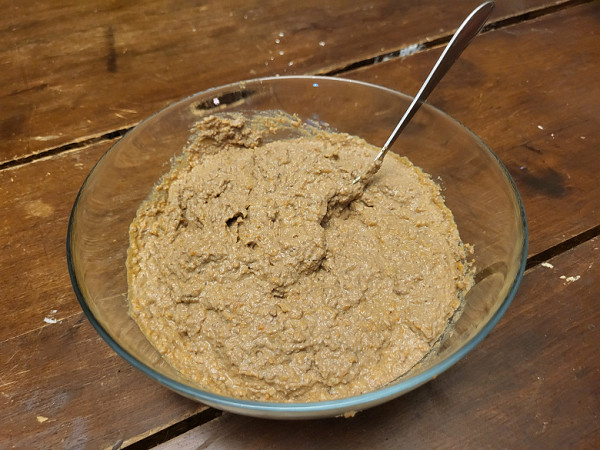
And we ate it with pleasure.

Result: excellent
conclusions
The Evolution HBS-1031 blender is indeed a reliable and functional tool: it performs all the basic tasks, while being devoid of redundant functions that often increase the cost of the device, but are of little use in everyday use.

We tested all three functions: immersion blender, chopper and whisk — and were pleased with the results.
Pros:
- nice design
- all three attachments are effective
Minuses:
- lack of a large chopper bowl for large volumes of products
